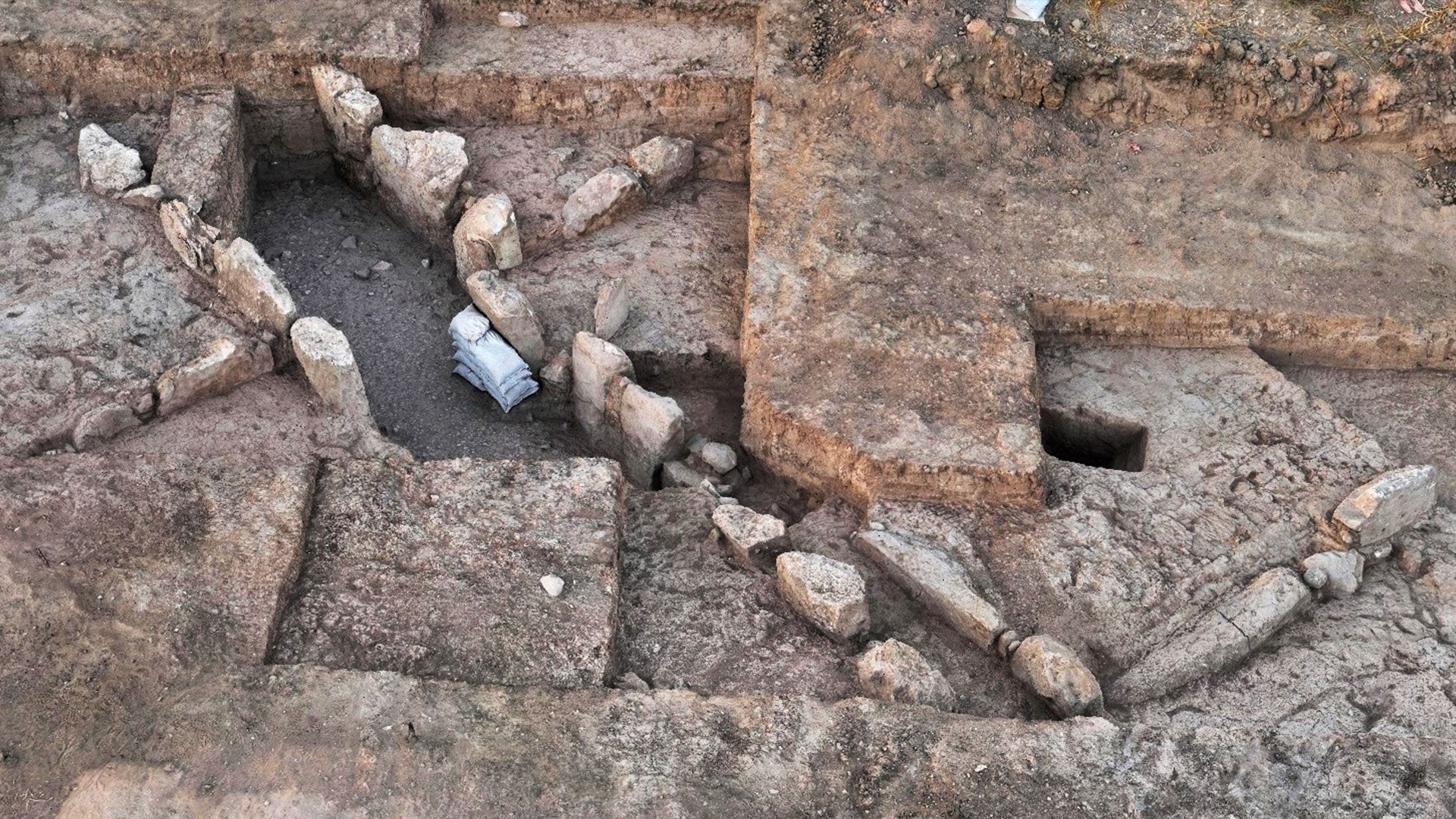
The Israel Antiquities Authority (IAA) has uncovered an ancient, monumental city gate during an excavation.
The 5,500-year-old gate is the oldest known gate found in the Land of Israel and according to archaeologists represents the “beginning of urbanization.”
“This is the first time that such a large gate dating to the Early Bronze (Age) has been uncovered,” said Emily Bischoff, Director of the IAA excavation.
“In order to construct the gate and the fortification walls, stones had to be brought from a distance, mudbricks had to be manufactured and the fortification walls had to be constructed. This was not achieved by one or a few individuals. The fortification system is evidence of social organization that represents the beginning of urbanization,” Bischoff said in a statement.
The IAA carried out the excavation over the last month funded by Mekorot, the national water company of Israel, ahead of laying a nearly seven-mile water pipeline. The tell (a mound that includes layers of civilizations from different time periods) discovered at what’s called Tell Erani, is near the southern Israeli city of Kiryat Gat.
The 37-acre site was an important early urban center in the area. The gate is preserved to a height of nearly five feet and is comprised of a passageway “built of large stones that lead into the ancient city. Two towers made of large stones flank the gate, and between them there are rows of mudbricks.”
“It is probable that all passers-by, traders or enemies, who wanted to enter the city had to pass through this impressive gate,” says Martin-David Pasternak, an IAA researcher of this time period.
Pasternak says that the gate was not only intended to defend the settlement but also conveyed a message to outsiders possibly including Egypt, that “one was entering an important strong settlement that was well-organized politically, socially and economically.”
“At the end of the Early Bronze Age (3500-2200 BC), the Egyptians themselves arrived here and settled the tell, and they reused the gate,” he added.
According to IAA archaeologist, Dr. Yitzhak Paz, an expert in the Early Bronze Age, the tell “was part of a large and important settlement system in the southwestern area of the country in this period. Within this system we can identify the first signs of the urbanization process, including settlement planning, social stratification, and public building.”
The discovery of the date helps archaeologists date the beginning of the urbanization process earlier than they thought previously, to the last third of the fourth millennium BC, Paz said.
Archaeologists have excavated Tell Erani since the mid-1950s and say it helps answer questions like, what a city is, what the characteristics of a city are and whether or not there was an Egyptian conquest.
Paz said that the ancient gate was covered up after the excavation “to protect it against erosion.”
According to the Mekorot Company, the archaeological excavations were conducted in conjunction with the construction of a 11-kilometer (6.6 miles), 90 million shekel ($25 million) water pipeline designed to augment the water supply to Kiryat Gat and specifically to supply water needs of the Intel factory, a major water consumer. Due to the discovery of the gate, it was decided to move the water pipe.
The remainder of this article is available in its entirety at CBN

